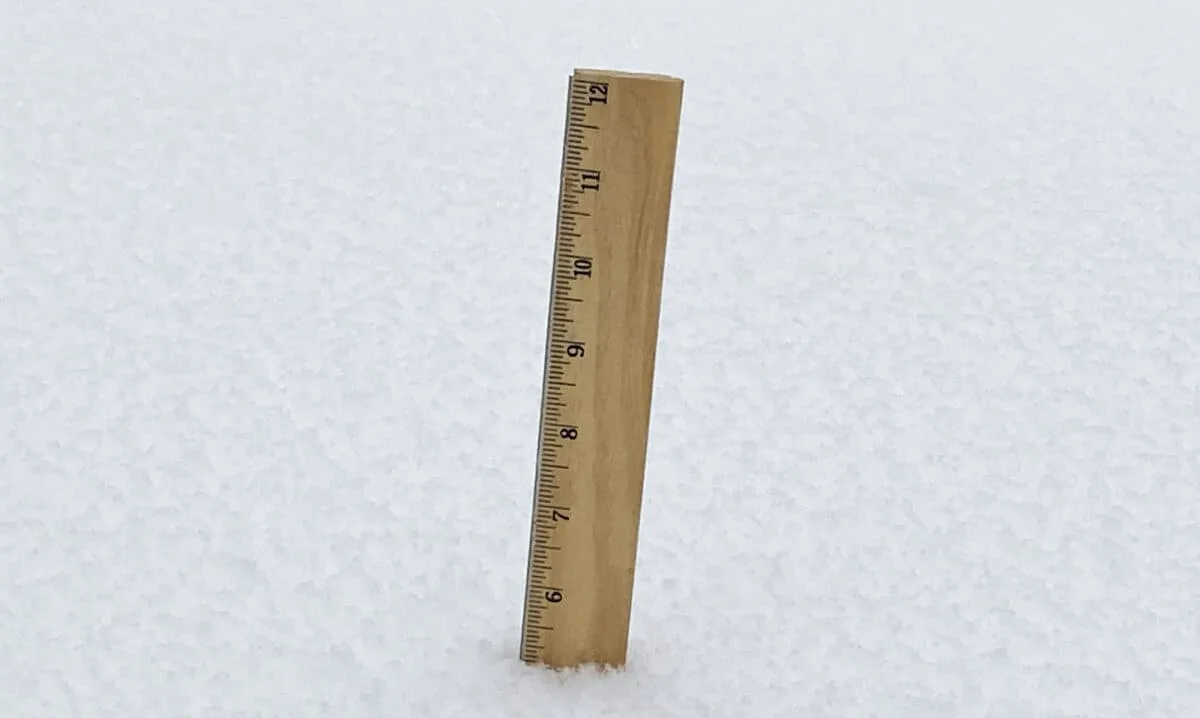When using snow blowers, it is important to know the minimum depth requirements before starting the snow removal process. Snowblowers work on any depth of snow. However, you will find the best results on snow deeper than two inches.
There are some additional factors you should consider when removing snow including the type of snow and the surface you will be working with. And while snowblowers make removing snow quick and easy, knowing some additional facts can significantly improve the process.

Amount Of Snow
You can measure the amount of snow you have either simply using your leg and a rough gage, by using an industrial metal ruler, or if you get a lot of snow often consider making a snow gage. You can use the snow gage to easily check the depth of the snow without any additional tools.
If you have less than two inches of snow that you’d like to remove consider using a leaf blower instead of a snowblower. Leaf blowers can work well on a small amount of snow, they are quick to fire up and easy to maneuver making them ideal for a small amount of snow.
Alternatively, you could look to shovel or scrape the snow into a deeper pile at the side of the pavement and then blow the snow onto the grass (or other surrounding areas) using the snowblower. This is more hassle but is likely to be significantly more effective.
If you do find yourself using a snowblower then it’s important to remember the maximum amount of snow it can move through as well as the minimum.
Most blowers can only do around 6-9 inches of snow before they become ineffective. There are some stronger commercial ones out there that can do around 12 inches of snow, however, even the best snowblowers aren’t effective beyond 16 inches of snow.
At that point, it is best to use a shovel to remove the snow or wait for some of it to melt before you start removing it. While it is frustrating to have snow everywhere, please be careful under all conditions. Even dry snow can be extremely slippery as you move closer to the surface. Take your time, and the snow will be gone before you know it.
Wet Snow Vs. Dry Snow
There are two different types of snow; wet snow and dry snow. The type of snow you have is going to significantly impact what tool is best to use to remove it.
Wet Snow: Wet snow is the one you can make snowballs with and sticks to the ground.
Wet snow is heavier as well since it contains more water. This makes it a little bit harder to deal with as the snowblower will have to work harder to remove the snow. It is more dangerous to work with since there is more water in the snow. You are at a greater risk of slipping and falling due to the water so watch your footing.
Dry Snow: Dry snow is the one that’s less sticky and it is easier to get rid of.
Dry snow can be blown away with a leaf blower. Your feet sink into dry snow more easily.
Here are the best ways to remove snow without a shovel, no matter what type of snow you have.
The Surrounding Areas
Before planning your snow removing method, consider the type of surface area as well as the depth. For example, a flat surface is quicker and easier to use a snowblower on, and is much safer when compared to a small hill. Walking in a straight line is faster than going up and down a small hill and is easier on the legs.
Working on a multi surface area or a flat area which leads into a hill is going to require you to adjust your blades to ensure they reach the entire depth of the snow. In order to clean the snow as fast as possible, I recommended starting in the middle of the area type. Once that area is complete, you can begin working on the next area.
This should minimize the amount of speed and blade depth adjustments you have to make on your snow blower and help you to get into a better snow clearing rhythm.
With single motor snowblowers and small snowblowers be sure to continuously check the surface and remove any large pieces of debris. If any small rocks get into the snowblower shoot of these tools they can cause some damage.


Caddie Darling
Sunday 16th of January 2022
Heck yeah! Great tips! Thank ya muchly.